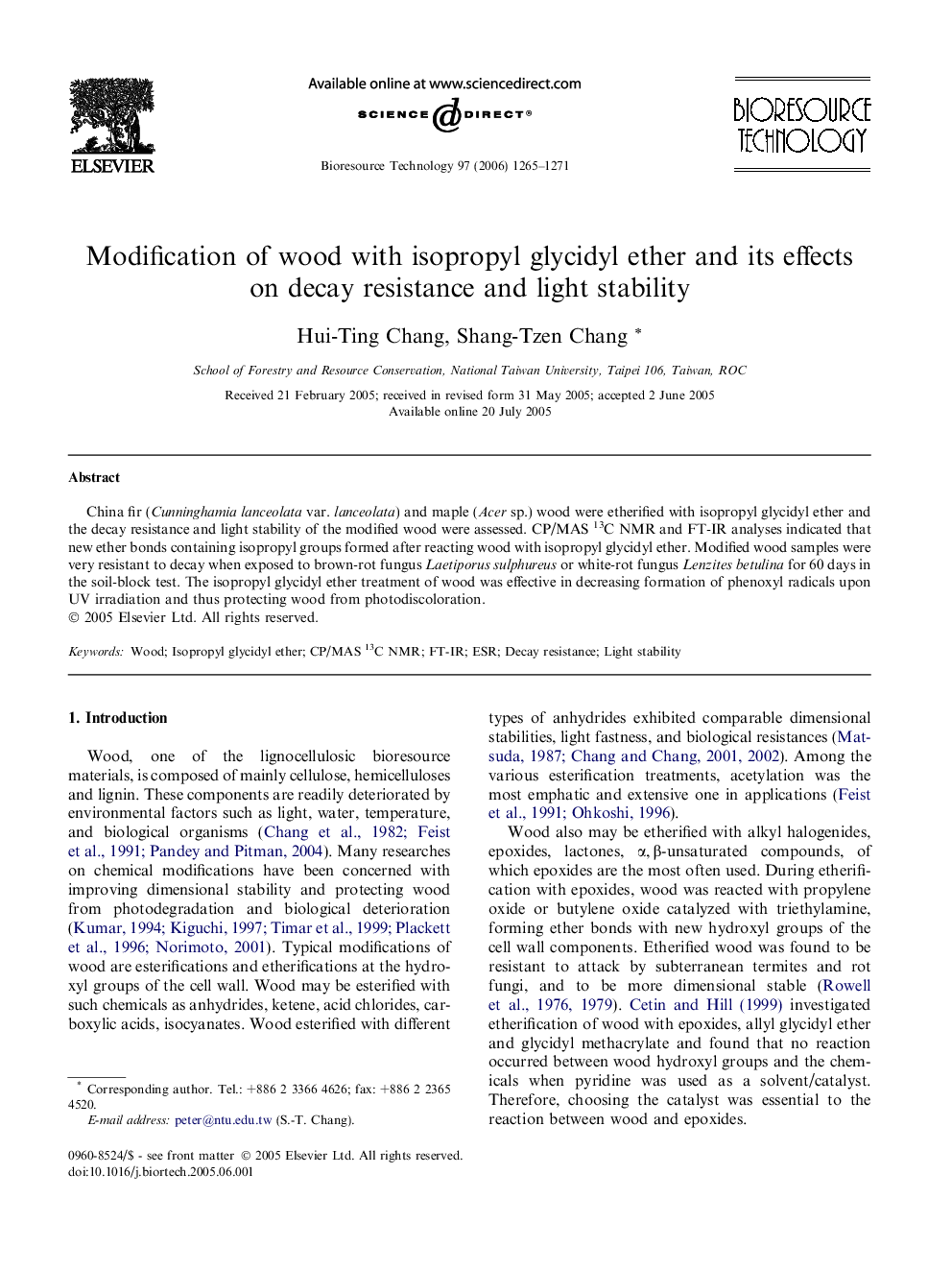| Article ID | Journal | Published Year | Pages | File Type |
|---|---|---|---|---|
| 685922 | Bioresource Technology | 2006 | 7 Pages |
Abstract
China fir (Cunninghamia lanceolata var. lanceolata) and maple (Acer sp.) wood were etherified with isopropyl glycidyl ether and the decay resistance and light stability of the modified wood were assessed. CP/MAS 13C NMR and FT-IR analyses indicated that new ether bonds containing isopropyl groups formed after reacting wood with isopropyl glycidyl ether. Modified wood samples were very resistant to decay when exposed to brown-rot fungus Laetiporus sulphureus or white-rot fungus Lenzites betulina for 60 days in the soil-block test. The isopropyl glycidyl ether treatment of wood was effective in decreasing formation of phenoxyl radicals upon UV irradiation and thus protecting wood from photodiscoloration.
Related Topics
Physical Sciences and Engineering
Chemical Engineering
Process Chemistry and Technology
Authors
Hui-Ting Chang, Shang-Tzen Chang,
